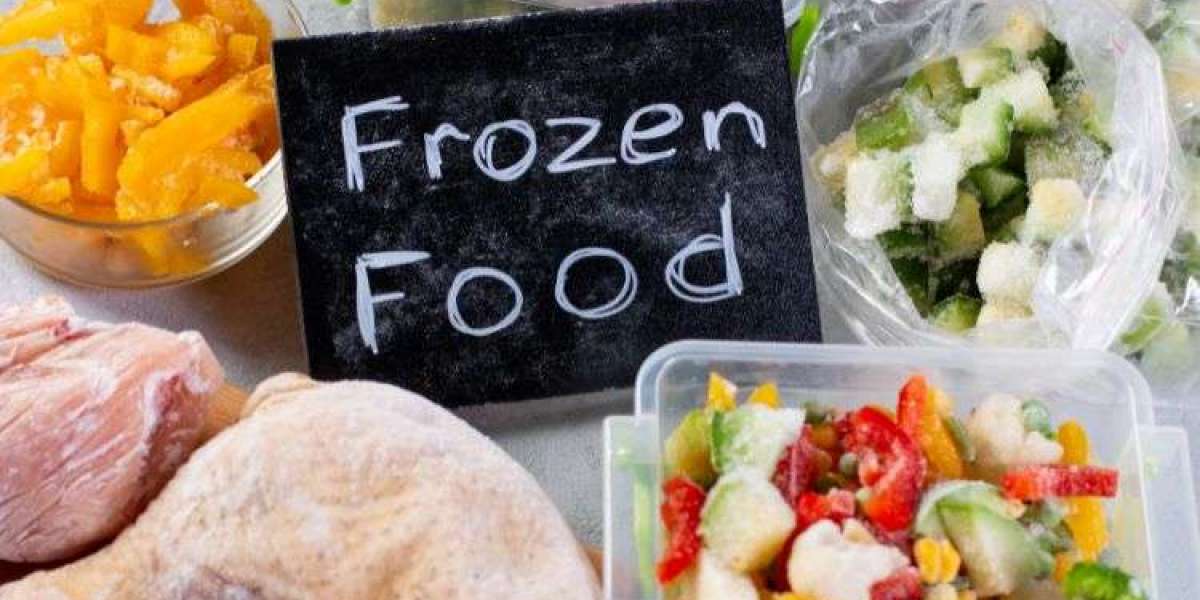The South Africa frozen foods market size has been a significant contributor to the nation's food industry, offering convenience, affordability, and versatility to consumers. As the COVID-19 pandemic swept across the globe, disrupting economies and industries, the South Africa frozen foods market stood as a resilient sector, adapting to shifting consumer behaviors and supply chain disruptions. Projections indicate that the South Africa frozen foods market size is expected to grow at a compound annual growth rate (CAGR) of 3.7% between 2024 and 2032. In this comprehensive analysis, we delve into the profound impact of COVID-19 on the South Africa frozen foods market, examining the shifts in consumer behavior, supply chain disruptions, regulatory changes, and the industry's innovative response to the crisis.
Shifts in Consumer Behavior
The onset of the COVID-19 pandemic prompted significant shifts in consumer behavior, reshaping purchasing patterns and preferences within the South Africa frozen foods market. With lockdown measures in place and concerns about food safety heightened, consumers turned to frozen foods for their convenience, longer shelf life, and perceived safety. Stockpiling behavior led to a surge in demand for frozen foods, as consumers sought to ensure a steady supply of essential goods amid uncertainty. Additionally, with more people working and studying from home, there was an increased demand for quick and easy meal solutions, further driving the consumption of frozen foods. Online grocery shopping and delivery services experienced a remarkable surge in popularity, providing consumers with a convenient and safe way to access frozen food products without leaving their homes.
Supply Chain Disruptions
The COVID-19 pandemic exposed vulnerabilities in the global supply chain, disrupting the production, distribution, and logistics of frozen food products in South Africa. Suppliers and distributors faced numerous challenges, including disruptions in transportation, labor shortages, and fluctuations in demand. Border closures and restrictions on international trade further exacerbated supply chain disruptions, leading to shortages and delays in the availability of certain frozen food products. Additionally, the implementation of stringent health and safety protocols in manufacturing and distribution facilities posed operational challenges, impacting production capacity and efficiency.
Adoption of Online Shopping and Delivery Services
Amidst the challenges posed by the COVID-19 pandemic, the adoption of online shopping and delivery services emerged as a crucial lifeline for the South Africa frozen foods market. With consumers increasingly wary of crowded stores and public spaces, online grocery shopping platforms witnessed a significant increase in traffic and transactions. Retailers and suppliers quickly adapted to meet this growing demand, investing in technology and infrastructure to enhance their e-commerce capabilities. As a result, consumers gained access to a wide range of frozen food products through online platforms, allowing them to shop conveniently and safely from the comfort of their homes.
Regulatory Changes and Safety Measures
In response to the COVID-19 pandemic, regulatory authorities in South Africa implemented new guidelines and safety measures to ensure the safety and hygiene of frozen food products. Manufacturing and distribution facilities were required to adhere to strict protocols, including regular sanitation, social distancing measures, and temperature screenings for employees. Compliance with these regulations posed significant challenges for industry players, necessitating adjustments to operational processes and resource allocation. Despite these challenges, ensuring the health and safety of workers and consumers remained a top priority for the South Africa frozen foods industry.
Innovation in Product Offerings and Packaging
The COVID-19 pandemic spurred innovation in product offerings and packaging within the South Africa frozen foods market. Companies responded to evolving consumer preferences by introducing new frozen food products tailored to meet changing dietary habits and lifestyles. There was a growing demand for healthier options, including plant-based alternatives and products with clean label ingredients. Additionally, there was an increased emphasis on sustainable packaging solutions, with companies exploring eco-friendly materials and reducing packaging waste. Innovation in product offerings and packaging not only addressed consumer demands but also positioned companies for long-term growth and competitiveness in the market.
Long-Term Implications and Future Outlook
As the world gradually emerges from the COVID-19 pandemic, the South Africa frozen foods market is poised for continued growth and innovation. The lessons learned from navigating the challenges of the past year have strengthened the industry's resilience and adaptability. Looking ahead, consumer demand for convenience, quality, and safety will continue to drive market trends, shaping the future trajectory of the South Africa frozen foods market. With ongoing investments in technology, sustainability, and consumer-centric strategies, the industry is well-positioned to navigate future challenges and capitalize on emerging opportunities.











